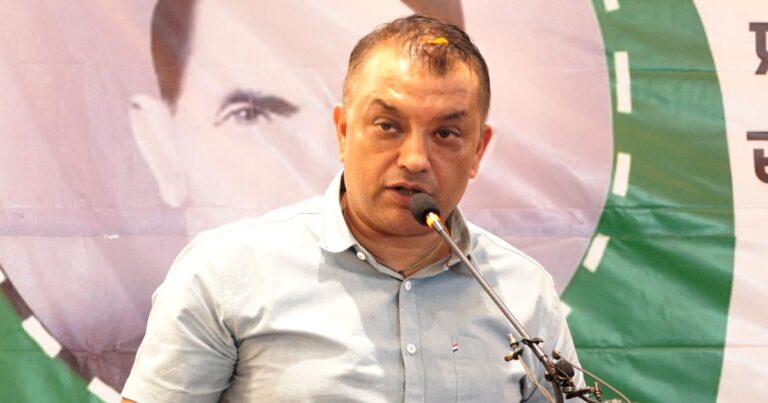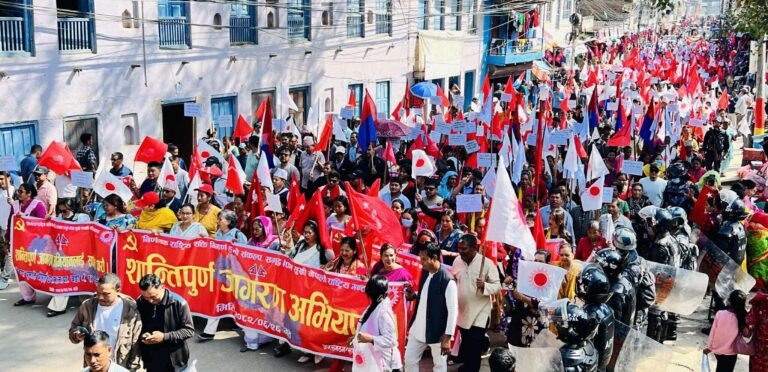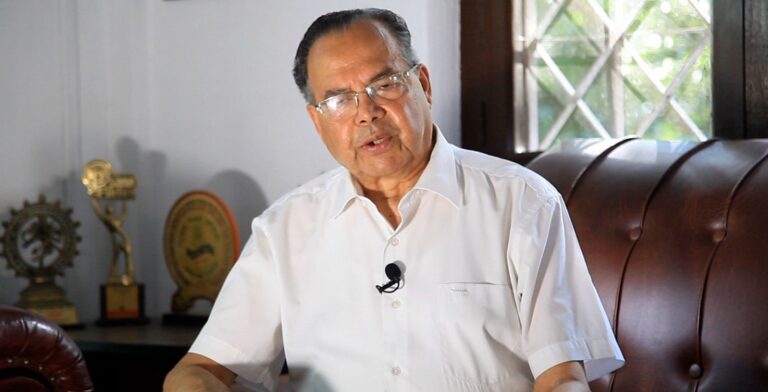
Continuous heavy rainfall in Mustang, Myagdi, Baglung, and Parbat has caused the water level in the Kaligandaki River to rise to its highest point this year. On Sunday morning, the river’s flow was recorded at 6.40 meters above normal, according to gauge reader Krishna Prasad Subedi. Earlier in the day, it had even reached 7.40 meters, but with the rainfall subsiding, water levels are expected to gradually decrease. Despite this, riverside communities remain at high risk due to the sudden surge.
Several settlements in Parbat district, including Bagerfaat, Waribeni, Milanchowk, Lasti, Khaniyaghat, Maldhunga, Nayapul, Modibeni, Jaiminighat, and Setibeni Bazaar, have been identified as vulnerable. The rising water level has also submerged the world’s largest Shaligram stone, located at the tri-junction of Parbat, Syangja, and Gulmi. According to priest Tilak Parajuli, religious structures in the area, including embankments and gabion protections, have been overwhelmed, severely damaging access infrastructure for pilgrims.
The Kaligandaki ‘A’ Hydropower Project has opened all its floodgates to handle the high flow. However, this has heightened concerns about possible flooding in Setibeni Bazaar, which lies along the border of Parbat, Syangja, and Gulmi districts. Nearly 200 traders and residents in the nearby markets are now at risk. Local businessman Bishnu Neupane recalled the devastating flood of October 7, 2009 (2066 B.S.), which displaced over three dozen families and submerged the market area. Although the Shaligram site is now underwater, the market area has not yet been flooded, he said, though fear among locals remains high. Authorities continue to monitor the situation closely, urging communities along the riverbanks to remain alert.




